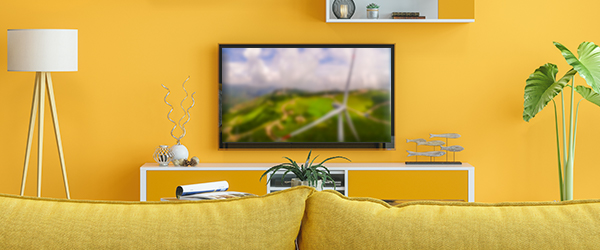How Much Electricity Does My TV Use?

First, let’s start with the basics.
How many watts does a TV use?
The answer can differ widely based on the type of TV. You can typically locate the specific wattage for your unit by looking at the back or bottom of your television. A watt is the electrical unit at which energy is generated or consumed. It’s important to note that this wattage refers to the maximum power used by the TV.
How many amps does a TV use?
If your TV doesn’t mention the wattage, there’s another way you can estimate that number. You can reference your manual for the specific amperage, which refers to the strength of the electrical current required to power your machine, multiplied by the voltage, which is the force that causes electrical current to move through the wire. You can estimate the voltage at 120 volts, which is common of most appliances. Once you’ve multiplied these numbers, this will give you the estimated wattage.Now, when it comes to being more energy efficient with your television viewing, here are a few things to know.
Energy efficiency tips
If you’ve purchased a TV in the past few years, you have likely noticed the wide variety of available options. If your TV was produced in 2011 or later, a yellow Energy Guide label would have been attached at purchase, which includes the estimated yearly electricity usage, assuming baseline estimates of 11 cents per kWh and five hours of daily use.Here are some things to know about energy efficiency with today’s televisions.
• Streaming – if you stream video content, doing so with a Smart TV (or a digital media player) is the most efficient option. Adding another console to stream can require additional energy.
• Easy as ABC – automatic brightness control adjusts the intensity based on the light in the room, which can help to save energy when watching your television.
• Picture settings – make sure to align your view (such as ‘sports’ or ‘vivid’) with that on the ENERGY STAR label (if yours is rated accordingly) to maximize your energy efficiency.
Want to learn ways to be more energy efficient?
We’ve got you covered! Check out our blog for more tips and tricks to help protect your budget and the planet.